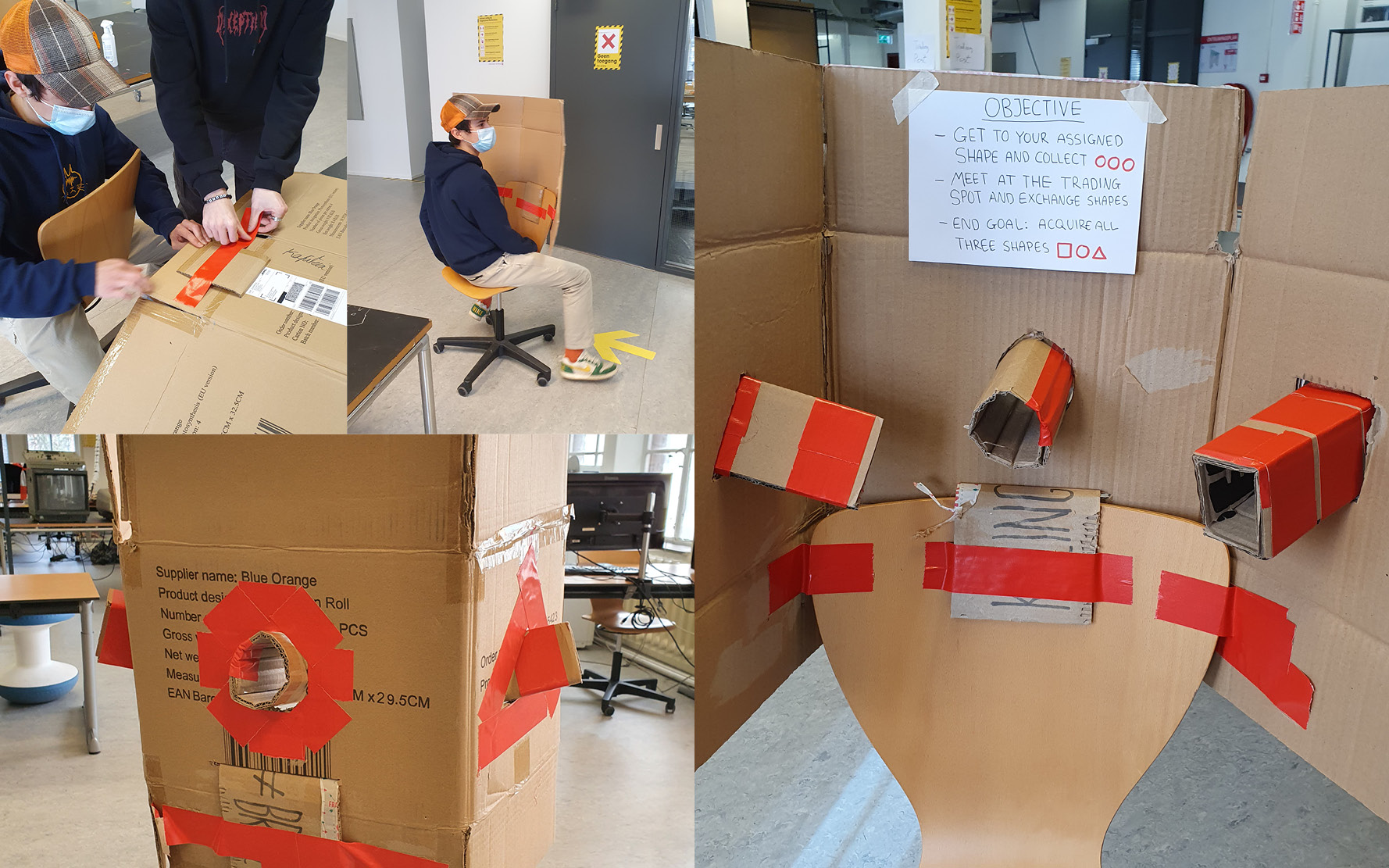Team 2 - Diego, Bram and Omar
Commercial Practice - Comfort and Mobility
Week 1
In the first week were mostly focused on conceptualizing. Below you can see the process.
In these pictures you can see the steps we made to create our scenario
After creating the scenario, we started making sketches to visualize our ideas.
Afterwards, we worked on making the prototype of our speculative object.
You can see the process below.
Here's a video showcasing how the speculative object was intended to work.
Week 2
=======>
For Week 2
In the second week we worked on finalizing our scenario and the presentation. Below you will see the behind the scenes.
========>
For Presentation
Presentation
Scenario: Humans didn't react quickly enough to restore nature's imbalance, which lead to major depletion of the ozone layer and the outside world has become uninhabitable.
Scenario: A small community of Rotterdam is working on rebuilding their civilization. The functionality of the city has changed, living and working are combined and a circular economy has taken place. The policies on mobility have changed. Citizens move individually but work collectively. The world has changed and so did the people. The community of Rotterdam now has a sense of purpose, rebuilding Rotterdam greater than it ever was.
The Markthal has become the central hub for the community of Rotterdam. From here, modules move and explore the other regions to gather resources on rebuilding Rotterdam. Solar panels on the Markthal are used for electricity and is also used for electrolysis. This is a technique to convert water to hydrogen, which can be used for powering the modules and to provide oxygen inside the Markthal for it's occupants.

We tested how people would react if they had to work in these said modules by simulating the experience.
We’ve made this contraption which represents the modules. We’ve simplified the concept of exchanging goods/resources by using objects with three different shapes: triangle, square and circle.
Each person will get one shape assigned to them and the point is to work together and exchange the shapes, so that at the end you each have all three different shapes.
The first time we tried it, we gave them more of a broad explanation of the objective, because we wanted to see how they will interact with the object. But it didn’t go as planned as the participants didn’t work together at all, but they just went and get the shapes on their own and they even avoided each other.
After these results we tried making it easier on them by giving a clear instruction, but there seem to also be a misunderstanding, because 2 of the 3 participants just abandoned their module and proceeded to walk to each other. However, they at least worked together in getting all three shapes.
At the end, we were able to get them to work together, though there is definitely room for improvements for our speculative object.